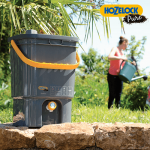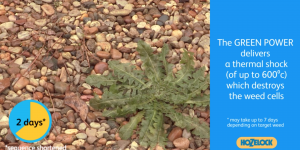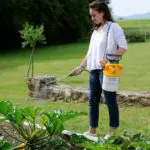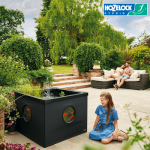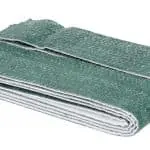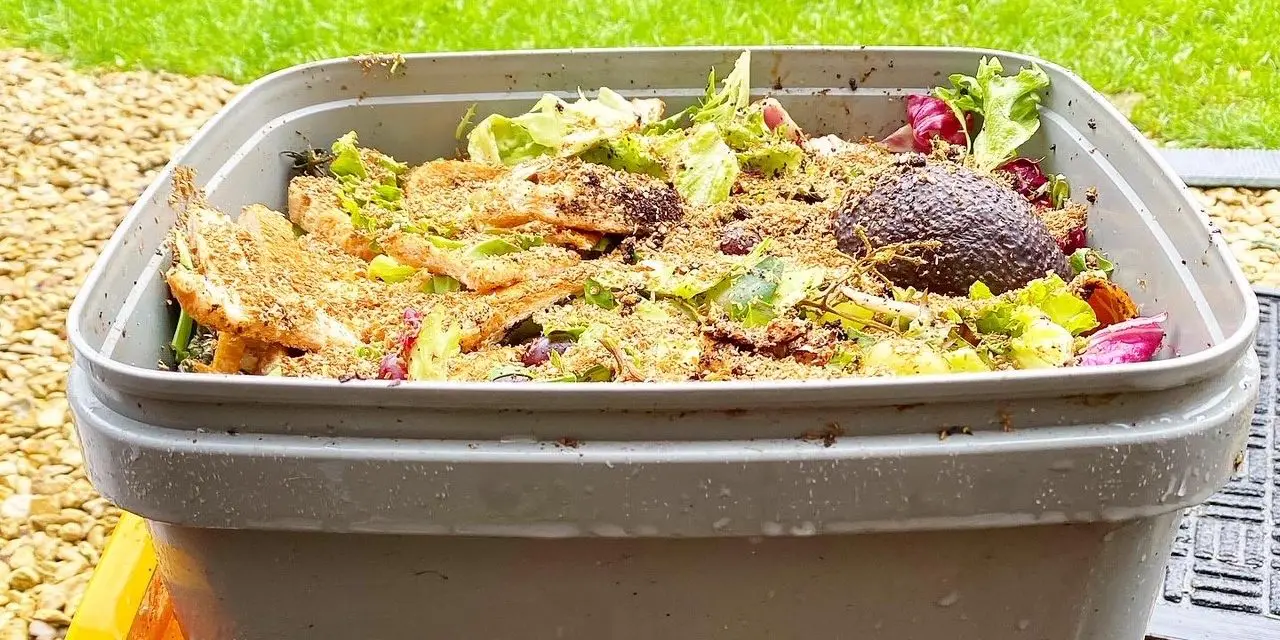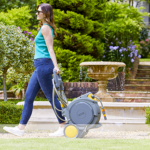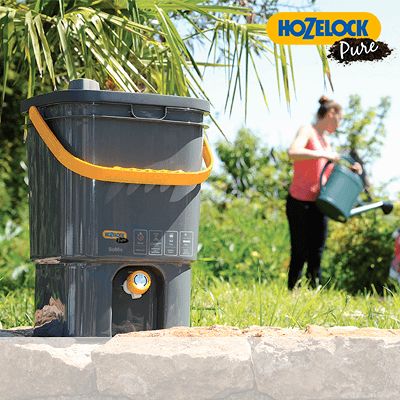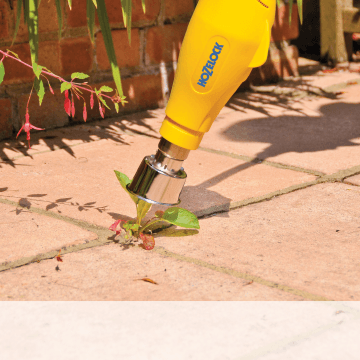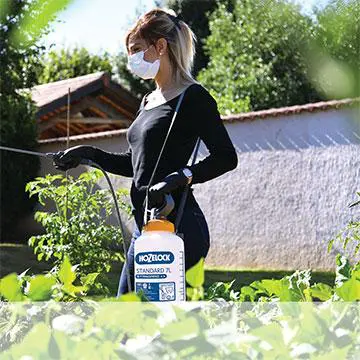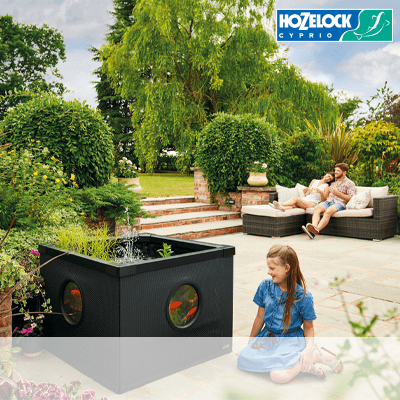I have been using the Hozelock Bokashi Composter for over a year and my experience has been an interesting one! You can find out exactly how I am getting on via my Instagram feed @littleblueshed. It takes a little getting used to, but the process could not be simpler, and having a garden and allotment to maintain I am always in need of some extra nutrients ready to add to the compost heap or dug into the soil.
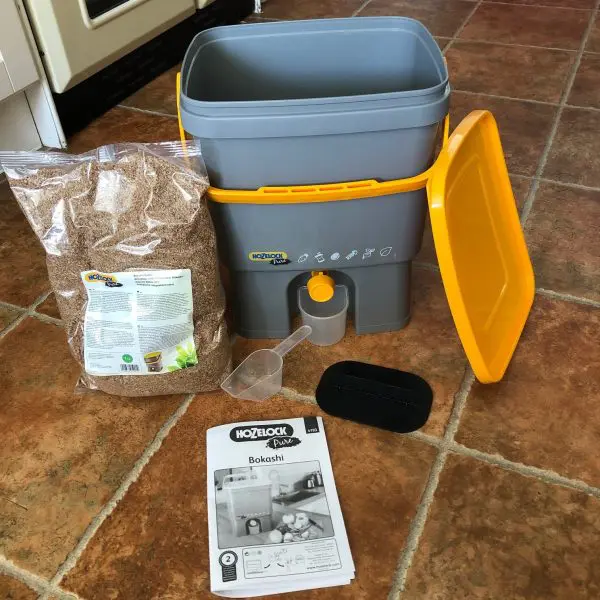
Bokashi. What is it?
Bokashi is the Japanese name of a fermentation process whereby food waste is fermented anaerobically by bacteria that act in the absence of air rather than decomposed aerobically as in traditional composting using worms, microorganisms and fungi. Bokashi composters or boxes are specially made sealed units enabling the fermentation process to take place inside our homes in a convenient and practical way. This stops food waste ending up in landfill. The idea in its simplicity is to speed up the natural process of traditional composting by using fermentation to first ‘digest’ our kitchen scraps and food waste before being dug into the garden or added to the compost heap, making it a great deal easier and faster to go from food waste to compost!
The best way to get into this process is to understand that Bokashi boxes produce material that is effectively a base for your home-composting practice or a prequel to the movie (if you will!). It’s worth considering that while you cannot plant directly into the produced Bokashi material, you can use it immediately as a soil improver and dig it into your garden soil or allotment to improve the soil health and structure.
My top 5 tips for owning a happy Bokashi!
- Chop up your scraps SMALL! Around 1-2 inch pieces is optimal.
- Drain the liquid regularly and store it in a clean air-tight container (I use jam jars).
- Invest in 2 x Bokashi boxes to ensure you don’t have to break the cycle (1 full & 1 in use)
- Don’t over-do it adding the bran – less is more except for the top layer.
- Adding coffee grinds between layers seems to help keep and odours at bay.
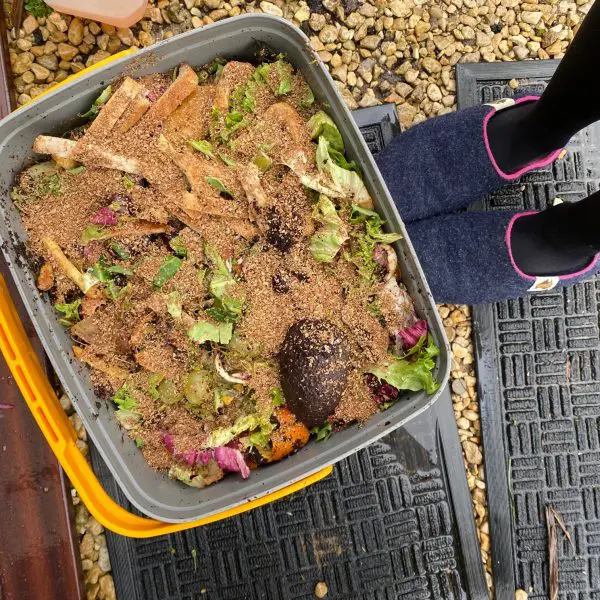
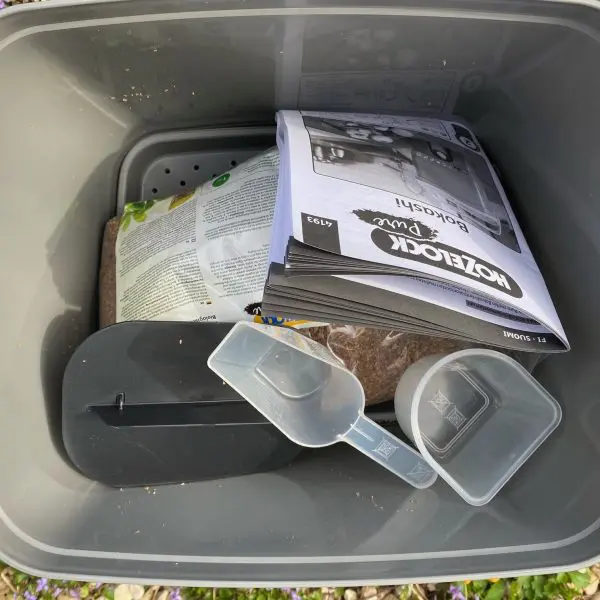
Using your Hozelock Bokashi Composter
Each Hozelock Bokashi Composter comes with a few accessories to make the process quick and easy. The perforated plate in the bottom of the box helps liquid drain freely, and the tap enables you do drain off regularly. The seal on the tap is very good and has never leaked!
The set also comes with a large bag of Bokashi Bran is the active ingredient in this anaerobic process. The bran is a granular, dry material mixed with molasses and lactobacilli, a bacteria that kickstarts the fermentation process. The bran is easy to measure out with the handy scoop and sprinkled over the food waste in layers each time new material is added to the box, it is then lightly compacted with the tamping tool and sealed. It really could not be easier!
Pros and Cons
What’s great?
- Small size yet the capacity is plenty for a few week’s scraps for a family of 3 or 4 – it fits neatly under the sink or in the bottom of a cupboard
- Leak proof tap – easy to drain
- Interior very easy to take apart and rinse with plain water (no chemicals) thoroughly between uses, lift-out tray is a great asset to the design.
- Tightly sealing lid – absolutely no odours escape while it is fermenting and the lid is closed.
There’s always a catch right? Usually yes, but I genuinely struggled to come up with a con that was really a problem.
If you know anything about fermentation, bran and the deterioration of organic materials you will know that this is not a classically odour-free process. That said none of the smells I have experienced with this process have been off-putting.
If you are following the guide and draining the liquid every few days, chopping up your scraps and adding a little bran between layers it really isn’t a smell to be bothered about. I do have one caveat to this though, and that is the smell is pretty dependent on what you put into your box. But even still – that is really just a sign that your fermentation process has kicked into action and the bran is doing its job.
The other smell you will notice is from the Bran, but again, as this is a natural product it isn’t a bad smell, in fact it is a bit like concentrated hops. Best to store it in a large kilner jar.
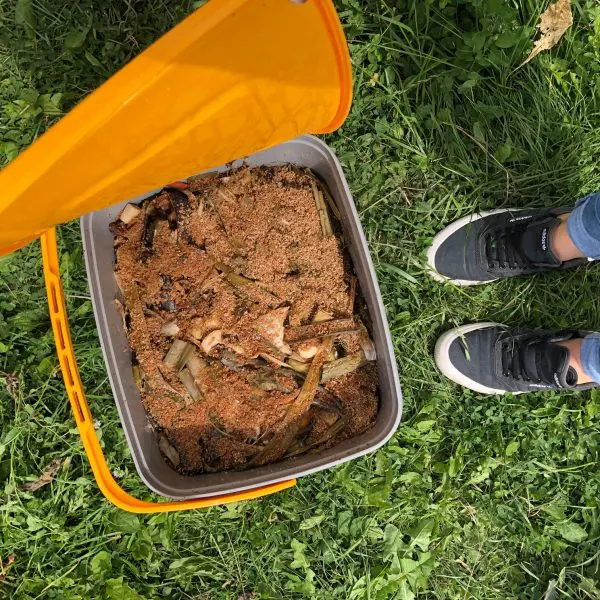
What do I do once my composter is full?
When your box is ready to empty, after 7-14 days, the contents won’t look dramatically different from when it went in, but it is chemically changed. This fermented material is referred to as ‘digestate’ – the result of methane fermentation or anaerobic digestion. This is the point at which you can add the food waste to your compost heap or dig into your garden soil in order to fully decompose and in turn fertilise your veg patch or flower garden!
Bokashi fermented food waste is not exactly like the bagged shop-bought compost we are familiar with. While the fermented food can be added to your compost heap to degrade further or dug into your flower beds, you can actually take your fermented waste and turn it into more ‘traditional’ potting compost. Here’s how…
Make a wormery
By emptying your fermented Bokashi food waste into a wormery, you are speeding up the process of decomposition using worms! Over the course of a few weeks or months depending on the time of year, the worms will work their magic turning the fermented Bokashi scraps or digest into glorious, coveted ‘black gold’ – the creme de la creme of traditional compost in no time at all. There is only one stipulation here when using wormeries, and is that you need to ensure what you have placed into your Bokashi composter is not harmful for the worms or would cause toxicity in the wormery.
Creating a compost factory
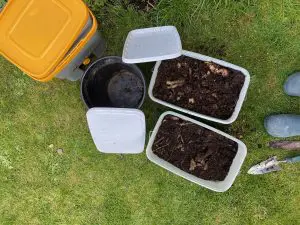
Make a compost factory
I must confess, I’m relatively new to the idea of Compost Factories, but it seems to be the most efficient way to turn the Bokashi material into soft, crumbly, ready-to-plant compost. Best of all it involves no extra cost and materials you probably already have to hand or can get hold of easily. All you need is a large container with a lid. You can use anything. I’ve seen people upcycle all sorts of things including an old bin, storage boxes, bath tub… it all depends on the space you have available. Personally, I am just starting out with this process so I’m using two average size storage boxes with lids. The next step is to wait for your Bokashi bin to finish its 2 week fermentation, then you tip the contents into the new container or box, and add in a good few scoops of your own garden soil. Then you pop the lid on loosely (you don’t need to seal it air tight) then you need to put the container somewhere at room temperature for best results. The magic ingredient here is your garden soil. Just a few scoops mixed in to your Bokashi digestate contains the millions of microorganisms, worms, worm eggs, beneficial fungi and microbes needed to process the organic material into compost. The Compost Factory works using aerobic decomposition the opposite process to Bokashi fermentation in its air-tight box which is anaerobic and requires a sealed environment.
Bokashi Hacks
- If you’re new to the process you may want to start with one box, but I really recommend investing in 2 x boxes (or more depending on how much waste you generate at home) so that you can have one box sealed and ‘fermenting’ while you fill up the empty one, this way you’ll have no food wasted and no gap between bokashi cycles.
- Think about where you’re going to keep your Bokashi bin, temperature is very important to the fermentation process. Too cold and it will slow right down or stop and to hot and the bacteria will die, again stopping the process. Ambient, room temperature works most effectively. Under the sink works well, but ideally a place that’s easily accessible and not in direct sun or liable to get frosted in winter.
- It does take a little extra time to chop up your peelings and leftovers into small chunks but take it from me – this REALLY does make a difference in how much you can fit into your box, the time it takes to produce the ferment liquid and it does speed up the digestive process – it also makes the end result quickly consumed by worms and soil life in your compost bin!
- I found that adding coffee grounds between layers also really helps to lessen and odours when you open the box.
Excess Bokashi fertiliser liquid?
- Give jars to neighbours noting the dilution, ration (1:100) for weekly plant feeds.
- Freeze your Fermentation liquid into fertiliser ice cubes ready to drop straight into your watering can. Although it does reduce the effectiveness of the microbes, this is still an effective and practical way to store large quantities of bokashi tea * Make sure your ice cube tray is CLEARLY labelled ‘ DO NOT EAT’ – you do not even want to consider ingesting this stuff!
- Pour your neat liquid down the drain and let the microbes and lactic acid get to work to unblocking and sanitizing your drain, waste pipes or septic tank.
Photo Credits: Katherine Wright
Sources:
https://www.thespruce.com
https://en.wikipedia.org/wiki/Bokashi_(horticulture)
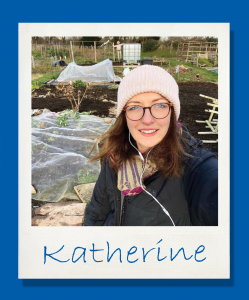
About the Author
Katherine Wright is author of the Little Blue Shed blog and owner of said shed and a small but productive allotment in Oxfordshire. You’ll mostly find her posting on Instagram (@littleblueshed) and getting to know other ‘allotmenteers’ all over the world.
“I love nothing more than planting, weeding and cracking on with jobs in the garden and at the allotment with the hope of living a more sustainable life. Seeing the plants come to life in spring is something I really look forward to!”
Follow Katherine’s progress via her blog or Instagram feed, where you can read all about her allotment life right from the very beginning.




